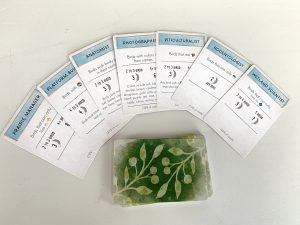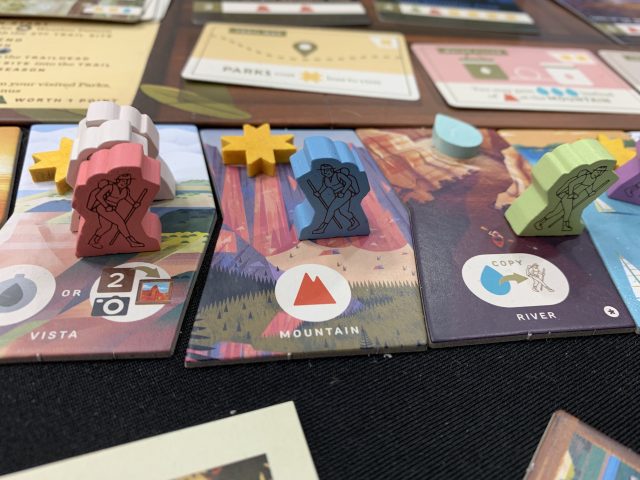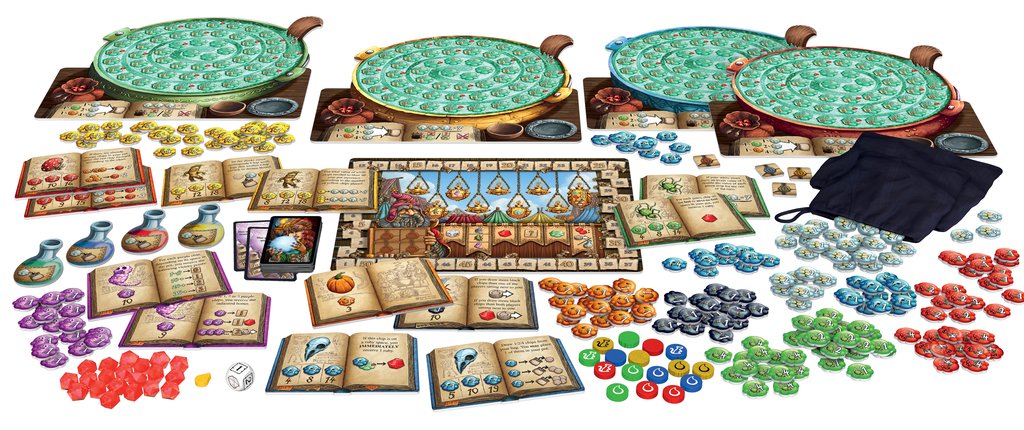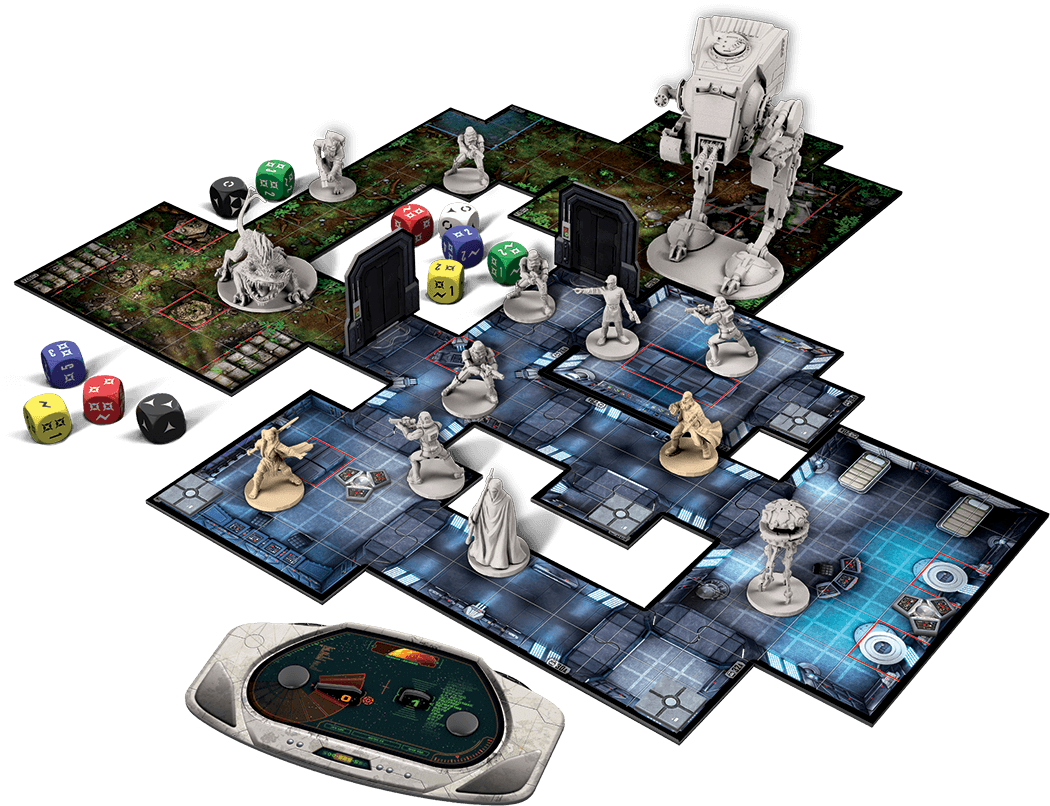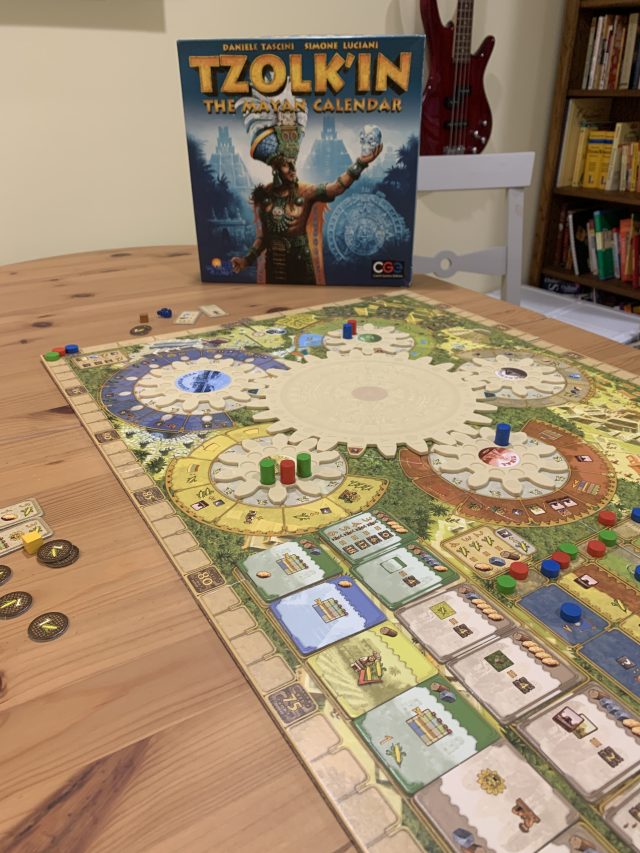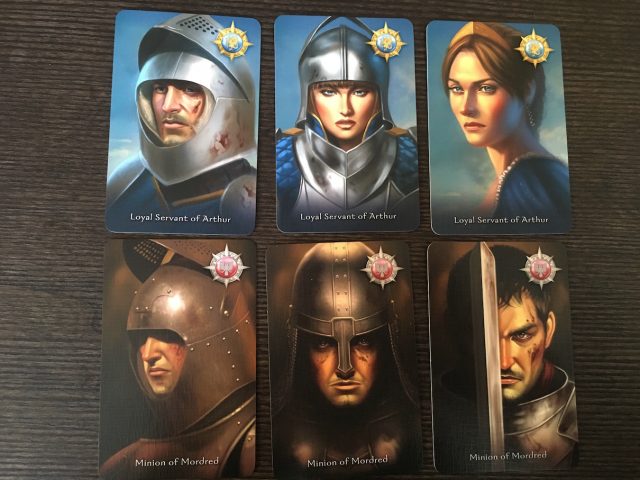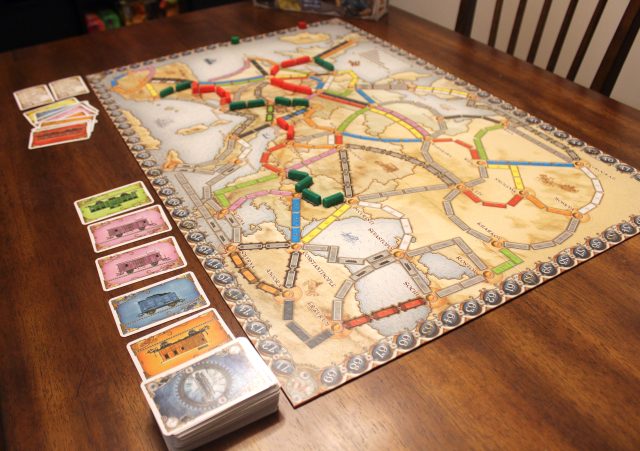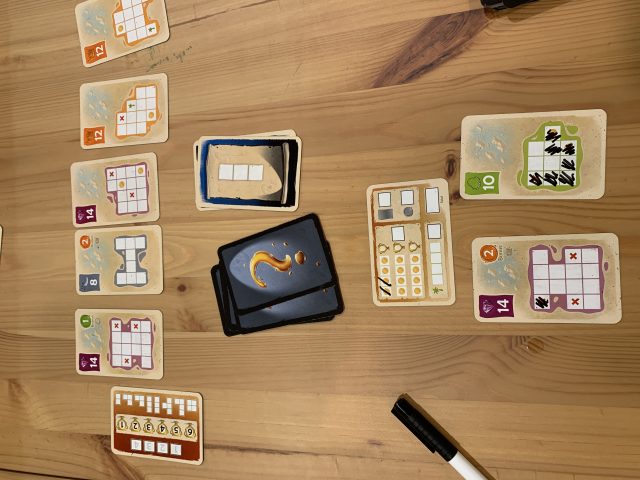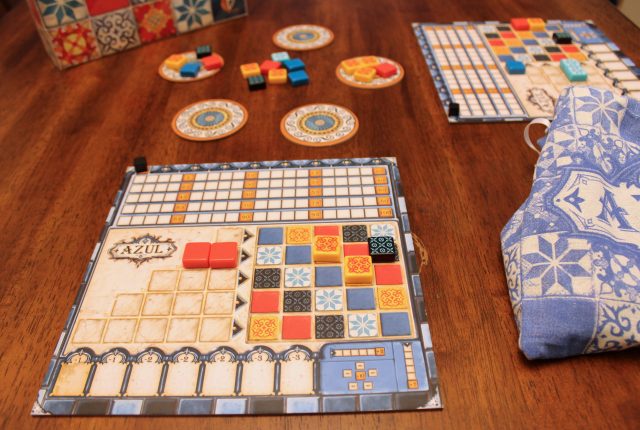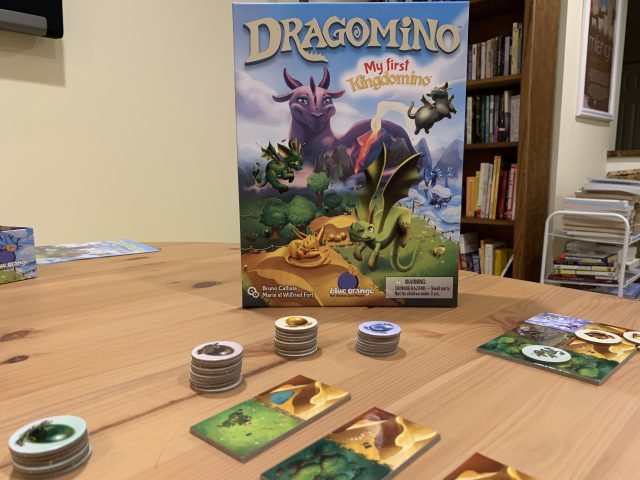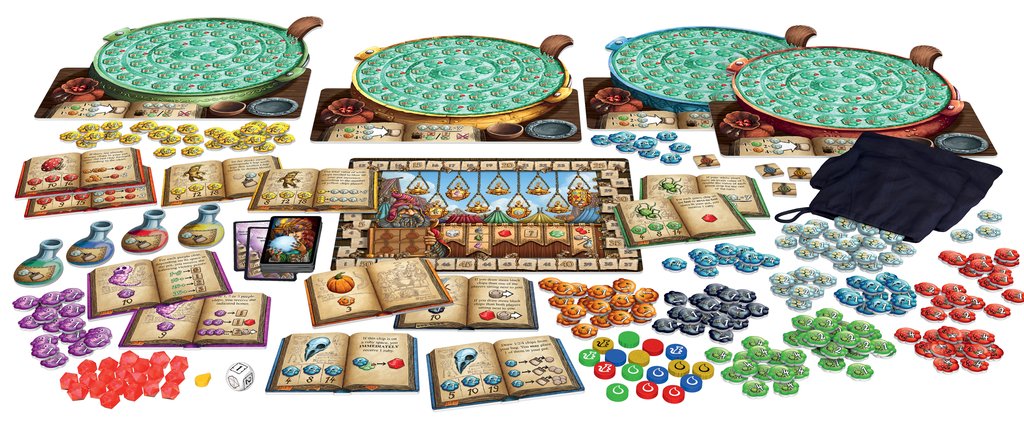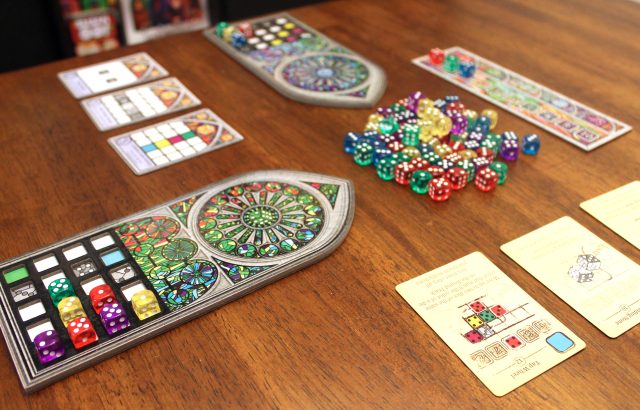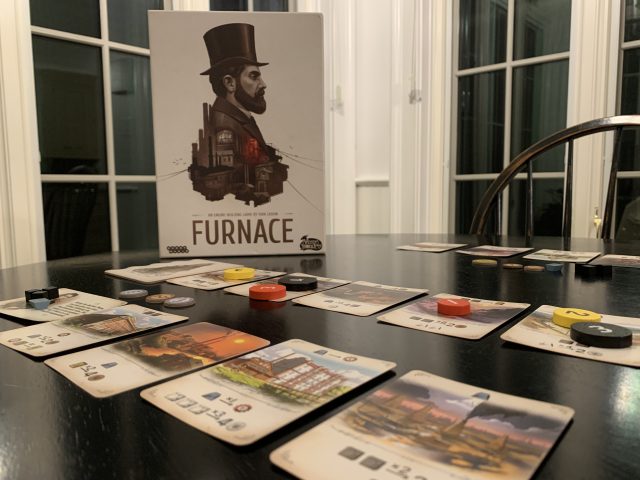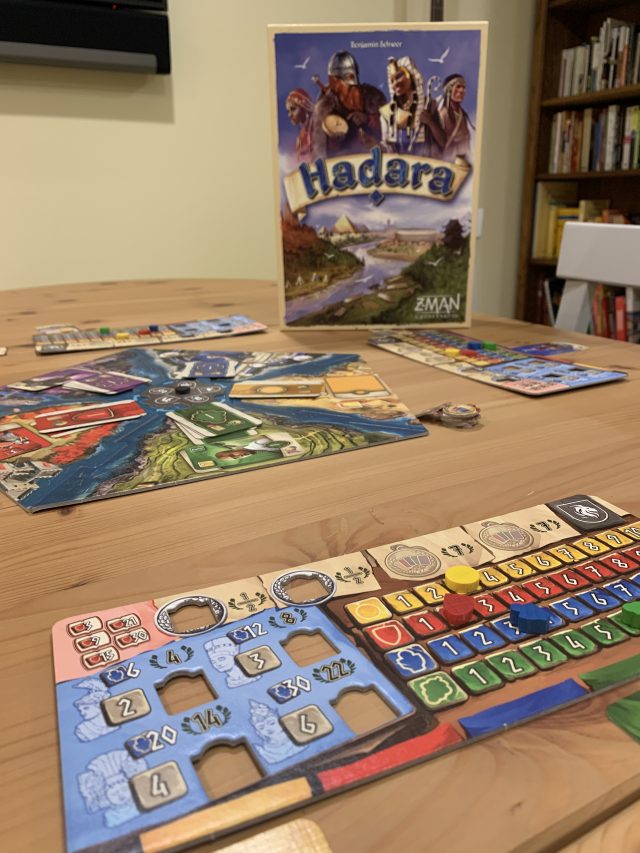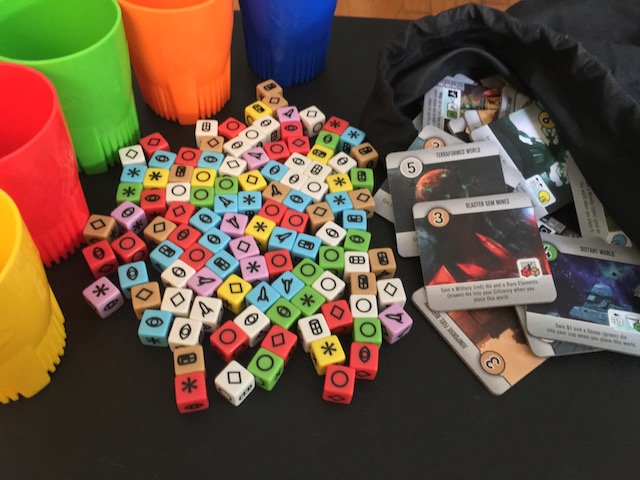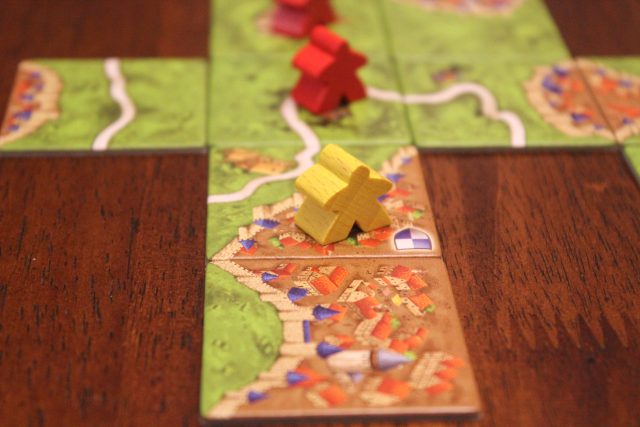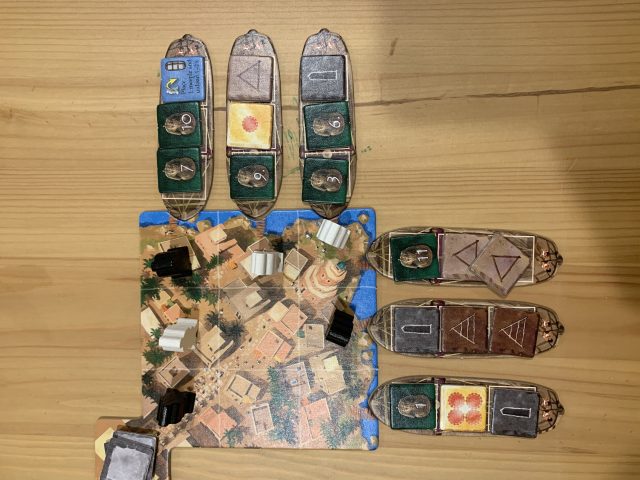It’s that time of year again—time to buy more board games than you possibly have time to play.
To aid you in your quest, we’ve once again updated our massive board game buyer’s guide for the year by adding new entries (including a bunch of games from 2020 and 2021), pruning some old entries, and bringing things in line with our current thoughts. The list is divided into sections that cater to different audiences, and we think there’s something here for everyone—even those who don’t yet know they like board games.
Whether you’re looking to pick up your next cardboard obsession or need a gift idea for your weird cousin who’s always going on about “efficient resource trade routes,” you’re in the right place.
Table of Contents
Aaron Zimmerman, Nate Anderson, Keith Law, and Tom Mendelsohn contributed to this guide.
Ars Technica may earn compensation for sales from links on this post through affiliate programs.
Family and new gamers
If you’re new to gaming (or simply trying to hook the unconverted), this is your section. Each game below is great for playing with people who are just dipping their toes into the big board game ocean. Colorful pieces, simple rules, and addictive gameplay—they don’t call them “gateway games” for nothing.
Splendor
2-4 players, 30 minutes, age 10+ / $25 at Amazon, Target, Walmart
We’ll take any chance we can get to recommend the 2014 classic Splendor. A staple of game nights everywhere, this accessible “engine-building” game tasks players with collecting gems (represented by poker chips) to buy cards, so they can buy cards worth points, so they can be the first to accrue 15 points. You can teach it to almost anyone, and it plays in a breezy and always-escalating 30 minutes. If your giftee doesn’t know the first thing about board games, start here. And if they already have the base game, consider picking up the new expansion.
Azul in play—a two-player game in progress.
Azul
2-4 players, 30-45 minutes, age 8+ / $27 at Amazon, Target
The words “instant classic” are overused in board gaming, but if Azul doesn’t fit the bill, no game does. The title took home the prestigious Spiel des Jahres (Game of the Year) award in 2018 in Germany, and it has quickly solidified its place in the “gateway” games pantheon.
Based on Islamic-inspired Portuguese tiles called azulejos, this family-weight abstract involves collecting sets of similar tiles and slotting them into rows on your personal game board. When a row is completely filled, one of its tiles is moved over into the square pattern to the right, garnering bonuses depending on placement. Turns are quick, and each set of tiles you grab creates both problems and opportunities for other players. There’s a tinge of “meanness” for players who are sensitive to that sort of thing, but it’s essential to Azul‘s wonderful interactive tension.
Gorgeous bakelite-style tiles seal the deal on a beautiful production. Read our review here.
Kingdomino
2-4 players, 15-20 minutes, age 8+ / $20 at Amazon, Miniature Market
Kingdomino is a dead-simple tile-laying game in which you try to group different areas—ocean, wheat field, mine, etc.—of your kingdom in order to score points. Some tiles have crowns on them. At game end, each set of contiguous area tiles is scored by multiplying the size of that area by the number of crowns on its tiles. Simple? Sure, except that you have to keep your kingdom within a 5×5 grid, and every area tile must be placed such that it touches an existing tile of that type. To make this even trickier, new tiles come out of the box and are chosen in player turn order—but the tile you take in one round determines your player order in the next. Take the better tile now and choose last in the next round? Or grab something not quite as good that will still get you first or second pick next time? This is a smooth, quick-playing game that has worked well with both kids and adults—even providing some surprisingly decent choices for seasoned gamers. A worthy winner of 2017’s important Spiel des Jahres (Game of the Year) award in Germany.
Dragonimo
2-4 players, 15 minutes, age 5+ / $20 at Amazon, Barnes & Noble, Miniature Market
Too often, when publishers try to adapt full-length games for the younger set, the results are little more than dumbed-down versions of the original. Dragonimo does it right, though, rethinking its parent game (Kingdomino) to create something new, clever, and enjoyable for players small and large. The domino-like tiles showing two squares of different terrains are still here, but now, players just choose one and place it in their play area wherever they’d like, without the limits of the first game. For each square that matches an adjacent terrain, you get a dragon egg of that color, which might have a baby dragon in it … or not. Each color has slightly different odds, but that’s all the strategy involved. You go until you’ve run through the small pile of domino tiles, then whoever has the most dragon babies wins. Suitable for players as young as 4, Dragonimo – or, as my niece called it, “Dragomania”—is the best true board game I’ve ever played for kids in that age group, and unlike so many games for small fries, it’s fun for the adult players, too.
Welcome To…
1-100 players, 25 minutes, age 10+ / $26 at Amazon, Target
Welcome To… has a claim to being the original flip-and-write game, where you flip multiple cards on each turn and players then choose one of the flipped cards, allowing them to write something on their scoresheets. If it’s not the first, it’s certainly the best, and took the idea mainstream. In Welcome To… each player has a paper representing their own planned community (as a Long Island native, I can’t help but think of Levittown), with three streets of houses and some separate scoring areas at the bottom.
You have to choose from three pairs of cards that each have a house number and a special feature, writing the number in a blank house on one of your streets and then taking the optional scoring action. Your houses must go in ascending order, however, and as the game progresses, it gets harder to find open lots. You also can build parks and pools, fence off divisions, and try to boost the value of sets of houses to increase your scoring. The best part of Welcome To… is that it scales to any number of players; at Gen Con, the publisher, Deep Water Games, has hosted mass sessions with over a hundred players. It’s easy to teach, fairly quick to play, and different every time.
Juicy Fruits
1-4 players, 20-50 minutes, age 8+ / $40 at Amazon, Barnes & Noble, Miniature Market
Juicy Fruits is a little heavier than the other games in this section, but just a shade, and the theme is so light and fun that it masks how much you end up thinking while playing. In Juicy Fruits, you and your fellow players are fruit stand vendors on your own beaches. You will collect five different fruits as your resources, using them to create different frozen treats for points, while also using them in different combinations to launch small ships off your beaches to clear more space (and gain points), or to buy more powerful tokens from the main board to make your moves more powerful.
The game takes a half hour to 40 minutes and is suitable for kids 8 and up. It’s clever enough—even without the included advanced mode, with an achievements track that adds complexity but isn’t any more fun—to capture the adult players as well.
Next steps
If you want slightly more complex games than the ones in the previous section, here are some “next step” games that kick things up a bit but still remain accessible for new gamers. This is our largest category because it covers a lot of ground.
In Wingspan, players are bird enthusiasts trying to attract birds to their aviaries. There are 170 unique bird cards in the game.
Aaron Zimmerman
A game in action.
Ars Technica
Wingspan
1-5 players, 40-70 minutes, age 10+ / $60 at Amazon, Target
If you only heard of one board game that was released in 2019, chances are good it was Wingspan. It’s not hard to see why. Stonemaier Games’ trademark stellar production is on full display here with a package that includes colorful player boards, 170 unique and beautifully illustrated bird cards, plastic eggs so lovely you’ll constantly fight the urge to eat them, and, yes, a bird house dice tower.
Birds are represented by cards, and you slot those cards into rows on your personal player board to score points and gain special powers. Each row is keyed to a certain action—scavenging for food, laying eggs, etc—and when you perform that action, you also activate all the special powers of the birds in that row. Start with nothing, and by the end of the game, you’re drowning in worms and eggs (this is… a good thing).
Wingspan is a perfect “next step” game that’s quick to teach and a joy to play no matter your gaming experience level. Read our review here.
Parks: for my money, the best-looking game at Gen Con 2019.
Players travel along the bottom path to collect resources and special abilities.
Players travel along the bottom path to collect resources and special abilities.
Cute little hikers in Parks.
Parks
1-5 players, 40-60 minutes, age 9+ / $46 at Amazon, Target
As we said in a previous Gen Con roundup, we’d be tempted to recommend Parks based solely on its beautiful presentation. Featuring artwork from the excellent 59 Parks Project, the game’s components are front and center, making for one of the most eye-catching games of the year (and can we talk about its perfect box insert?!)
But a game is nothing without compelling gameplay, and Parks thankfully brings along plenty of fun decisions for newer gamers and old hands alike. The game tasks players with making their way down a hiking trail using two hikers, with each space granting you resources or special actions. Any hiker on a space blocks other hikers from landing on it, so the trick is finding the best spots to exploit and the best time to hop on down the trail.
At the end of the trail, you can trade your resources (sunlight, water, mountains, trees, etc.) to visit a national park. Does this make sense? Not really. Is it fun? Yes. You’ll also be taking pictures of your travels, buying equipment to help you along your way, and filling up your trusty canteen whenever the opportunity presents itself. Pick up this delightful little game for the outdoors enthusiast in your life.
Quacks of Quedlinburg
2-4 player, 45 minutes, age 10+ / $40 at Amazon, Cardhaus
A ridiculously fun press-your-luck bag-building game about being a charlatan at a medieval fair, hawking crazy potions that you mix up out of dubious components plucked unseen from your stash. Each one makes the potion stronger, but beware the white berries—too many and your cauldron will bubble over. The game has wonderful, whimsical art, terrific replayability, and great components—including rubies and rat tails. And because everyone builds their potions simultaneously, this is another game with almost no downtime between turns.
Quacks won the prestigious Kennerspiel des Jahres game award in 2018, and with good reason. You’re not technically required to love it, but if you’re a gamer (or in love with one), you should at least try it.
Sagrada
1-4 players, 20-40 minutes, age 14+ / $35 at Amazon, Target
Constructing real stained-glass windows may or may not sound like a good time, but it’s pure pleasure in the world of Sagrada. In this dice-drafting game, players take turns picking dice from a pool available each round, then slotting those dice into the “window” they’re constructing on a personal player board. The boards themselves dictate where certain dice can go—only red dice here, only 2s here—while the game itself has its own global placement rules. The trick is combining these placement restrictions with the dice on offer in any given round to maximize points based on the four different scoring cards that shape each game (three of these cards are public, one is private to each player). Because this can be difficult, the game also offers “tools” that can alter some of the rules—for a fee. Sagrada plays quickly, looks gorgeous on the table, and is a satisfyingly thinky experience with low rules overhead. Highly recommended for gamers who like solving puzzles.
Lords of Waterdeep
2-5 players, 60-120 minutes, age 12+ / $37 at Amazon, Target
Lords of Waterdeep is a game set in the Dungeons and Dragons universe, but it’s not a “D&D game.” Absent are the dice, dungeon tiles, and sword-wielding minis you’d expect; instead, the game comes with meeples, wooden cubes, and a victory point track—all the markings of a Eurogame. If you’ve been wondering what this whole “worker placement” craze in board games is all about, Lords of Waterdeep is the perfect introduction. Simple rules combine with addictive “collect resources to complete quests” gameplay to deliver a full board game experience that newer players can sink their teeth into. The theme is light and fairly inconsequential, so even those who don’t know the difference between a goblin and a bugbear can still have a blast.
Everdell
1-4 players, 40-80 minutes, age 13+ / $55 at Amazon, Target
Everdell is a marvel, an exemplar of how to bring different mechanics together in a way that makes a better game without too much complication. Players in Everdell use their cute animal meeples (animeeples?) to take resources or acquire cards from the main board and then can use those resources to build the cards to their tableaux—but some cards also have a tech tree and allow you to build later cards for free. Action spaces are limited, so you have to be efficient with your choices, but you can also buy cards that add spaces to the board or make your moves more powerful.
The goal is to build the most valuable forest city of cards, gaining bonus tokens or meeting objective cards, in just three seasons of moves, so once you know how to play, games take an hour or less. My daughter and I have played a two-player game in just a half an hour. This game has killed Stone Age for me, as it has all the same elements I like, but without dice, and with a shorter playing time.
Search for Planet X
1-4 players, 60 minutes, age 13+ / $35 at Amazon, Target
Deduction games abound, but most of them aren’t very good, or they aren’t really board games—Chronicles of Crime is a superb, cooperative crime-solving game, but it’s not much of a tabletop experience. The Search for Planet X is one of the best deduction games ever, with a clever scoring system that gives smaller rewards to players who solve secondary mysteries while still rewarding the player who first solves the ultimate mystery—the location of the undiscovered Planet X—with the biggest bonus.
The board splits the sky into a set of 12 or 18 zones, and players must deduce what objects are in which zone using a few clues they get at the start and then various methods of scanning the sky for more information. The best part of the game is that you can tailor the difficulty level for each player. Everyone starts the game with unique information, so younger or less experienced players can get more info up front. It is a board game, for sure—and a great exercise for your mind, too.
Fort
2-4 players, 20-40 minutes, age 10+ / $29 at Amazon, Cardhaus
If the art in Fort looks a little familiar, you might recognize its similarity to Root, a heavier (and fun) game with similarly whimsical art from the same artist. Fort is lighter in complexity and tone, and it has the perfect theme for a small-box game, as players compete to build decks of neighborhood kids to populate their clubhouses. If you don’t use a card in your hand on a turn, however, another player can steal one of them, so don’t get your heart set on keeping Puddin’ in your clubhouse for the whole game. You gain some powers as your deck gets stronger and you meet certain thresholds, and there are some public objectives you can meet as well. The game brings deckbuilders down to a level younger players can appreciate, and if this art doesn’t draw you in, you might have rocks in your soul.
Furnace
2-4 players, 30-60 minutes, age 12+ / $40 at Barnes & Noble
One of the best and most popular new games of the year, Furnace takes the best parts of Century Spice Road and Gizmos and mashes them up into one easy-to-learn game that still challenges your brain to solve a (fun, I swear) optimization problem. Over the course of four rounds, players bid on cards in the central market, taking the ones they win and adding them to their personal engines, executing the actions on the cards one by one, in order, to try to turn the game’s resources into more cash. If you bid on a card but don’t win it, you get “compensation” in the form of more resources—often a lot of them—or the ability to convert resources into better ones, so you will choose to lose some cards on purpose just for the compensation. You can also upgrade cards you’ve bought, flipping them over to add another action every time you activate them. The action phase is simultaneous, so games can run just 30-40 minutes once everyone knows how they work. It’s best with 3 or 4 players, although there’s a dummy player variant for the two-player game.
Hadara
2-5 players, 45-60 minutes, age 10+ / $50 at Amazon, Miniature Market, Cardhaus
Hadara is often compared to 7 Wonders, to which it certainly owes a thematic and structural debt, but that sells this game short. The way it plays out creates a very different experience, as well as a longer one. In Hadara, players buy cards in five colors representing four areas of achievement for their civilizations—military, science, food, and income—and a fifth color that can apply to any of the others. Most cards allow you to move one or more of your trackers for those four areas, and each tracker has a different benefit, like allowing you to buy colony tiles, increasing your income, or making sure you can feed your people. The game forces you to consider balance across all dimensions, but you can often tailor your strategy around boosting one of them as long as you don’t neglect the others. It’s the rare game that plays as well with two players as it does with five, and the replay value is extremely high thanks to all the variation in the cards.
Midweight strategy
For many people, midweight strategy games are the sweet spot between brain-burning, all-day affairs and lighter, “filler”-type games. These games generally play in an hour or two and provide a ton of interesting decisions for people with a little experience under their belts.
Viticulture: Essential Edition
1-6 players, 45-90 minutes, age 13+ / $49 at Amazon, Target
Viticulture—”the strategic game of winemaking”—straddles the line between the “next steps” and “midweight strategy” categories. Its worker placement gameplay is more complex than that seen in Lords of Waterdeep, but it’s still easily manageable for those just beginning to wrap their heads around strategic Eurogames. Viticulture tasks players with building up and operating a successful winery, which is just as lovely as it sounds. Beautiful components combine with card-heavy worker placement gameplay to make for a game that has rightfully earned its place in many board gamers’ hearts. The Essential Edition comes with a decent amount of expansion content, and it’s all modular, meaning that you can add and remove complexity as you like.
The Castles of Burgundy
2-4 players, 30-90 minutes, age 12+ / 20th Anniversary: $50 at Amazon, Barnes & Noble
A bland theme, dry artwork, chintzy components—and some of the best gameplay you can find in a board game. For our money, this is legendary designer Stefan Feld’s best game, and that’s saying a lot. In Castles of Burgundy, you’ll compete with your opponents to grab hexagonal tiles that you slot into spaces on a personal player board to build up your kingdom. Each tile you place gives you a special action, and the crazy combos you can pull off will make you feel like a genius. Castles also features some of the best dice-rolling mechanics in any strategy game. A nice card game version is also available, but we recommend going for the full thing. An essential for any serious Eurogamer’s shelf.

Roll for the Galaxy
2-5 players, 45 minutes, age 13+ / $40 at Cardhaus, Amazon
Roll for the Galaxy is a streamlined, dice-game version of the modern classic card game Race for the Galaxy, but it’s decidedly not Race for the Galaxy: The Dice Game. That is, it’s not a dumbed-down snoozer or Yahtzee-aping cash-in like some dice-game versions of other board games. It’s also a much easier game to teach to newcomers than the notoriously arcane Race. Roll sees you collecting dice and laying tiles to create the best civilization in the galaxy. Your dice, which represent workers in your empire, provide you with flexible options and a fun mini-puzzle to solve every round, and there are always ways to mitigate the luck of the roll and bend the dice to your will. Roll for the Galaxy is highly replayable, fiendishly addictive, and very quick to play once everyone knows what they’re doing. And it comes with 111 colorful custom dice and rocketship-themed cups to roll them in.
Concordia
2-5 players, 100 minutes, age 13+ / $56 at Amazon, Target
Concordia exemplifies a common board gaming buzzword: elegance. The rules are simple for a midweight Eurogame, but the explosion of strategic options those rules open up is dizzying. Part deckbuilding, part resource management, part economic route-building, Concordia tasks players with expanding a Roman dynasty across the Mediterranean, building cities, establishing trade routes, and, of course, jockeying for position against other players. All of the game’s mechanics notch together in a wonderfully complex clockwork, forcing you to consider how every action you take affects the many competing and intertwined goals that make up your overall strategy. We could not recommend this game more highly.
Terraforming Mars: Ares Expedition
1-4 players, 45-60 minutes, age 14+ / $28 at Amazon, Target
Terraforming Mars (see below) is one of the most acclaimed “heavier” games of all time—with good reason, as it scratches so many different itches for fans of complex games. But while it’s fairly easy to learn, it’s difficult to play well. It’s also long, easily running to two hours even for experienced players, and you have to keep track of so much in your head (and on the table) as you go that it makes the game very complex.
Enter Terraforming Mars: Ares Expedition, a streamlined version of the game that plays in an hour or less, maintaining the original’s theme and parameters. Players are all trying to build the best engine with their cards while they jointly work to terraform the red planet, raising its temperature and oxygen concentration while bringing water to the surface. You get points for those communal tasks, but the bulk of your points will come from your own cards. It’s the Terraforming Mars experience, but in half the time, and you don’t even have to read the boring books that inspired it.
Lorenzo il Magnifico
2-4 players, 60-120 minutes, age 12+ / $40 at Amazon
Lorenzo il Magnifico is an extremely Euro-y Eurogame. Players are the heads of noble families during the Italian Renaissance, competing to score points through efficient worker placement and economic engine construction. A “Vatican track” seals the “dry Euro” deal—you climb the ranks by obtaining “prayer points” in order to avoid the nasty effects of “excommunication tiles.” Riveting stuff.
But the game puts some interesting twists on well-worn gameplay tropes, most notably in its worker placement. At the beginning of each round, three colored dice are rolled, which are keyed to specific workers in each player’s employ. The number on each die determines its corresponding workers’ power for the round—if you roll a 5 on the orange die, every player’s orange worker has a power of 5. The higher the number, the better stuff you can get from the main board, including resources and, most importantly, cards. The cards drive your strategy; you can construct a resource-production chain, go heavy into the military, or recruit helpers that give you special powers.
One of our favorite Euros from the past several years, and we love Euros.
Thematic games
From dice-chucking “Ameritrash” to text-based crime solving and cooperative legacy-building, these are our picks for those who want to be completely immersed in their tabletop experience.
A player’s area during play. Gloomhaven takes up some space.
A player’s area during play. Gloomhaven takes up some space.
The included insert holds the game’s card, miniatures, and class boxes well.
Gloomhaven
1-4 players, 60-120 minutes, age 12+ / $120 at Amazon, Miniature Market
When we said that Gloomhaven is the best dungeon crawl board game we’ve ever played, we meant it. Almost obscenely excessive, Gloomhaven‘s 20-pound box is filled to the brim with hundreds of cardboard tokens and dungeon tiles, dozens of decks of cards, 17 plastic miniatures (each with its own pack of accoutrements), sheets of stickers, and a bunch of mysterious sealed boxes. The game’s co-op campaign, taking place on 97 different maps, will take you well over 100 hours to complete. But best of all, the gameplay is fun, deep, and different. There are no dice—everything is driven by multi-use cards that represent both your stamina and the moves you can do, which makes for much more strategic play than your run-of-the-mill dungeon crawler.
Gloomhaven‘s high MSRP doesn’t put it in impulse-buy territory, of course, but if anything, the game is underpriced due to the ridiculous amount of content on offer. If you have a group with the wherewithal for Gloomhaven‘s “legacy”-style campaign play (and the patience for its admittedly arduous setup), this is a board game experience of a lifetime. Read our review here.
Star Wars: Imperial Assault
2-5 players, 60-120 minutes, age 14+ / $88 at Amazon, Miniature Market
Combining Fantasy Flight Games’ long-running and ever-more-finessed dungeon-crawling ruleset with a Star Wars veneer, this is probably the purest and best distillation of the genre on the market today. Imperial Assault is a romp from start to finish, with one to four players taking the role of a crack team of rebel heroes, fighting another player who either controls the might of the Empire and its many storm troopers or various other villains from the Star Wars movies and expanded universe. (An app allows up to four people to play the game fully cooperatively.)
Various cleverly linked narrative campaigns offer months of entertainment for a dedicated group, while the skirmish mode allows two players to select small armies and battle one another on an equal footing—two very different games in one admittedly expensive box. Of course, this being a FFG game, there are expansions. Forty-eight, in fact, at last count, including five big boxes, dozens of miniature packs, and seven skirmish maps. More are on the way because Fantasy Flight can’t seem to help itself—and Star Wars is the IP that laid the golden egg. Read our review here.
Mansions of Madness: Second Edition
1-5 players, 120-180 minutes, age 14+ / $90 at Amazon, Miniature Market
Mansions of Madness‘ first edition, released in 2011, was a flawed-but-beloved Lovecraftian horror game that played a bit like an RPG-lite in board game form. Up to four players took on the role of characters investigating a mystery in a creepy mansion, with another person playing as the Keeper, a dungeon master who controlled the monsters and kept the pre-written stories humming along.
With 2016’s second edition, the job of Keeper was outsourced—to your tablet. An app now controls the narrative so that players can unite for a totally cooperative experience. Mansions of Madness: Second Edition has all the hallmarks of a big-box Fantasy Flight game—huge theme, lots of dice rolling, and high-quality components. If your giftee likes thrill-ride, funhouse horror board games, this game needs to be on their shelf. You can read our review here.
Sherlock Holmes Consulting Detective: Jack the Ripper & West End Adventures
1-8 players, 1-3 hours, age 10+ / $40 at Amazon, Miniature Market
Nothing puts you into Holmes’ shoes—or his distinctive deerstalker—like Sherlock Holmes Consulting Detective (SHCD), a deduction adventure that has been around for decades but has finally gotten a lavish new edition and some revised cases. SHCD isn’t a traditional “game;” it’s a cooperative affair that involves your team trekking across Victorian London, reading interviews, and perusing newspaper articles for clues. The more locations you visit, the worse your score. Can you beat the master, Holmes himself, to the solution? Well… no, you can’t, but that’s hardly the point. These are terrific (and surprisingly well-written) multiplayer adventures. Buy the second set of cases and you’ll be treated to a linked series of Jack the Ripper mysteries that culminate in a chance to stop Jack himself.
Pandemic Legacy (Seasons 1 and 2)
1-4 players, 60 minutes, age 13+ / Season 1: $42 at Amazon, Season 2: $52 at Amazon, Target
Hands-down one of the greatest experiences you can have on the tabletop, Pandemic: Legacy and its sequel are a lesson in what this hobby is capable of. (Read our reviews of Season 1 and Season 2.) Best played with the same group of players over the course of several months, you cooperate in a desperate battle to save the world from a series of devastating diseases. The great trick here is that you play the same game two dozen times, but every time you do, something changes for good. There are hundreds of stickers which permanently affect the board and change the rules, while cards, characters, and powers are literally ripped up as you go, driving forward a story chock-full of in-cred-ib-le twists and turns. You don’t need to have played the first Pandemic: Legacy to play the second, which is set 71 years later in a much-changed world and unfolds quite differently (but just as thrillingly). Between them, these games offer an experience like no other.
A new season, Season 0, came out last year.
Heavier fare
Longer and more complex, the games in this section are “gamer’s games.” Here are a few recommendations to keep those brains churning.
Spirit Island
1-4 players, 90-120 minutes, age 13+ / $80 at Amazon, Walmart
Many board games put you in the shoes of colonizers exploiting a “newly discovered” land and its people. Spirit Island turns this all-too-well-worn theme on its head, letting you and up to three friends play as the spirits defending an island being ravaged by outside explorers. Like Pandemic, it’s a cooperative game—all players fight together against the game itself—but unlike Pandemic, it’s not for board game beginners. The deep card play and complex upgrade paths make for a decidedly thinky (and crushingly difficult) co-op experience, and if you or your giftee is the type of gamer who loves long, brain-burning turns, Spirit Island is a great buy. If you get bored of the base game (unlikely—there’s plenty of content, here), you can always pick up the game’s Branch and Claw expansion. Read our review here.
Scythe
1-5 players, 115 minutes, age 14+ / $63 at Amazon, Target
Set in an alt-history 1920s Europe, Scythe suits players up in giant mechs to spar for control over hexes on a giant board. But although it looks like a big ol’ wargame, Scythe is actually a deep, puzzly Euro. Wins usually hinge less on overt violence and more on how effectively you’ve been able to set up an efficient production chain. Military posturing—puffing up your chest to dissuade other players from horning in on your slowly growing kingdom—provides the game with a constant source of tension and interactivity.
Scythe is a huge, lavish production with top-of-the-line components and fantastic gameplay. Playing a game of Scythe feels like An Event, even though it won’t take you the entire day to get through. Highly recommended. You can read our review here.
Terraforming Mars
1-5 players, 120 minutes, age 12+ / $50 at Amazon, Cardhaus
There are plenty of Mars-themed board games, but Terraforming Mars is the unquestioned daddy of the genre. It packs a hefty punch into its two-or-so hours, and there’s something ineffably satisfying about watching the desert bloom under tiles of ocean and grass.
Terraforming Mars has piles and piles of colored and metallic cubes that really make the experience on a primal level, but the artwork is unfortunately a bit bland and unpolished. That doesn’t really matter when you’re having so much, though. It’s a game of card drafting, as players take on the role of corporations paid to turn the Red Planet green. You start with lichen and balance six resources in the hope of ending up with cities and oceans. If there’s one criticism, it’s that there’s not much player conflict, but Terraforming is a deep and deeply replayable puzzle. Read our review here.
Great Western Trail
1-4 players, 75-150 minutes, age 12+ / $70 at Amazon, Miniature Market
Great Western Trail just got a long-needed reprint and update this summer, getting rid of some of the problematic art in the first edition while boosting the components, including a two-layered board that lets tokens and pieces sit in recessed spaces. It also added an official solo mode that plays extremely well. Designed by Alexander Pfister (Port Royal, Maracaibo, Isle of Skye), Great Western Trail turns players into ranchers. You collect hands of cow cards, hire workers to help you grow your operations, build stations along the board’s main path, and eventually deliver cows to Kansas City, where they’ll be slaughtered and shipped to parts beyond. (The game is less gory than that makes it sound.) The solo mode is appropriately hard and makes it clear how much you have to focus on building up your deliveries so that you get your money’s worth each time you reach the end of the path.
Tzolk’in: The Mayan Calendar
2-4 players, 90 minutes, age 13+ / $42 at Cardhaus
Tzolk’in has one of the most striking boards you will ever see in a tabletop game: There are five interconnected plastic gears sitting on top of the board. Players place their meeples on the lowest unoccupied space on a gear, and after every turn, you move the largest gear one space, which turns all the other gears as well—and moves every meeple to a more powerful action space. There’s a delicate dance of placing and retrieving meeples and building powerful moves in which you can retrieve several meeples at once. You have a lot of things to keep track of: the three temple tracks, buildings and monuments, and making sure you have enough corn to feed your workers. The game is co-designed by Simone Luciani, who also made the brilliant Grand Austria Hotel and Lorenzo il Magnifico, all of which are complex yet accessible, and are somewhat limited in player interaction.
The Red Cathedral
1-4 players, 30-120 minutes, age 10+ / $35 at Barnes & Noble
A heavier game in a small box, The Red Cathedral marries multiple game mechanics you’ve seen elsewhere into a brilliant, intricate race to build six sections of the titular cathedral and rack up the most points. Players will claim up to six sections of the cathedral, which changes form each game and has exactly six sections per player, and then will move communal dice around the rondel on the board to gather resources, money, or other bonuses. You can also spend an action moving the resources you’ve collected to complete the sections you’ve claimed or build decorations on completed sections (even those your opponents finished) for further points. There’s a small random element when you roll the dice, but you do so after you move them to a new space and gain any resources or rewards, so the randomness applies to what actions you can take rather than whether your chosen action will work out. It plays well with two to four players and runs 90 minutes or so once you get the hang of it. It also has a fantastic solo mode.
Card games
Don’t want to break out a board and a million little cardboard pieces? From drafting to trick-taking to everything in between, these card games are great for beginners and vets alike.
Marvel Champions: The Card Game
1-4 players, 45-90 minutes, age 14+ / $60 at Barnes & Noble, Miniature Market
If you or your kids are fans of both Marvel and Magic-like card games, you can safely stop reading now and just pick up this game. If you need some more convincing, read on.
Marvel Champions is essentially a streamlined (and somewhat pared-down) version of Fantasy Flight’s very popular Lord of the Rings Card Game system, with some fun superhero-specific mechanics thrown in to keep things optimally thematic. You play the game cooperatively with up to three friends—we recommend solo or 2-player games to keep things moving—and fight against the game itself. Choose a scenario, choose a hero deck, and you’re off.
Victory requires spending time in both your hero and alter-ego forms, thwarting the villains’ nefarious schemes (“thwart” is an actual hero stat) and just beating the living snot out of the villain himself. The heroes in the core set are Spider-Man, Iron Man, Black Panther, She-Hulk, and Captain Marvel; the villains are Rhino, Claw, and Ultron. Marvel Champions is a Living Card Game, which means new (non-randomized) expansions will be released on a regular schedule. And for the first time ever, you can fully engage in the game’s (simple) deckbuilding with only one core set. Progress, FFG!
Arboretum
2-4 players, 30 minutes, age 8+ / $20 at Amazon, Target
The only component in Arboretum is a deck of 80 cards composed of 10 colored suits that represent different species of trees. The goal of the game is to create beautiful paths of trees that start and end with the same suit, with ascending numbers in between. On your turn, you draw two cards (either from a deck or your opponents’ discard piles), play a card to your arboretum, and then discard a card. Every player has their own dedicated discard pile, and the trick is seeing what suits your opponents are playing and trying not to feed them those cards through your discards. To add even more tension, you need to have the highest total value of a suit in your hand at the end of the game to score that suit’s path, which makes managing your hand an exercise in careful balance and vicious hate-drafting. What appears at first glance to be a lovely little card game about trees is, in fact, a cutthroat, sweaty knife fight.
If you’re into tense card games with plenty of difficult decisions, you’ll love Arboretum.
Sushi Go Party!
2-8 players, 20 minutes, age 8+ / $22 at Amazon, Barnes & Noble, Miniature Market
This is a cracking party game with many depths hidden under its kawaii exterior. It’s a pick-and-pass game in which you’re scoring points by collecting sets of sushi, desserts, drinks, and sundries, each of which score in different combinations. Everyone gets a hand of cards, plays one face-up in front of them, and passes the rest on until there are none left. Then you go again. There are dozens of different foods in the box, only a handful of which appear in each game; the fun and the complexity come from all the strange combinations you can fabricate by combining them into different menus. Consider the expanded—and barely more expensive—Party version, because it has heaps of extra foodstuffs and accommodates more people. (If you value simplicity over “having more options but needing to build the deck,” just pick up the original version.)
Ecosystem
2-6 players, 15-20 minutes, age 14+ / $15 at Amazon, Miniature Market
Ecosystem is a card-drafting game that plays well with up to 6 players and keeps things moving because you play your cards simultaneously. All players build a 4 x 5 tableaux of cards representing different animals or their two possible habitats (meadows and streams). Every card type scores in its own way, often based on what’s adjacent to it. Trout want to be near streams, and bears want to be near trout and bees, but foxes do not want to be near wolves (who does?). You can also score for the longest streams and for building larger contiguous meadows. There are very few games that play as well with five or six as they do with two or three, but Ecosystem absolutely does, and if anything, it’s best with more players because you’ll use the entire deck.
Party games
Got more players than the standard two to four? Party games have you covered. Lie to your friends, flex your word-association powers, even pilot a submarine—the games on this list are guaranteed to inject a raucous good time into your gathering. Non-gamer friendly, too!
Resistance: Avalon
5-10 players, 30 minutes, age 13+ / $20 at Amazon
Lying to friends is fun. As evidence, we present the scores of game store shelves choked with Werewolf-inspired “social deduction” party games. The Resistance is, in many ways, the benchmark for the genre, and the Avalon variant—which adds the role cards that are now a mainstay of such games—ratchets the tension up to 11.
At the beginning of Avalon, you are given a card that tells you whether you’re a good guy or a bad guy. Players then embark on a series of quests; the good guys want to succeed, while the bad guys want to secretly tank the mission. Rooting out the betrayers (or hiding from the noble do-gooders) requires more than a little cunning, treachery, and a willingness to make wild, baseless accusations. (Check out our favorite bluffing game list here.)
Codenames
Codenames: 2-8 players, 20 minutes, age 10+ / $8 at Amazon, Target
Codenames Duet: 2 players, 20 minutes, age 10+ / $19 at Amazon, Target
We’ve been told that there are people who don’t like the 2015 smash hit Codenames, but we don’t buy it. Everyone we’ve ever taught the game, from grandmothers to hardcore gamers, has been entranced by its super-simple setup and the exciting space it creates for creative thinking. The game sees two teams racing to cover up cards on a 5×5 grid through word association. On each card is a single word, and the mission is to select only those words that belong to your team. Choosing a word that belongs to the opposing team could give away points, while accidentally selecting the hidden “assassin” card immediately ends the match. The only clue as to which cards are safe to select comes from each team’s spymaster, and their clue can only be a single word followed by the number of cards to which it applies. If you have friends who love to entertain, buy them this game. (It’s currently the top party game on BoardGameGeek.) If you want to play it without a group, we suggest the new Codenames Duet, designed expressly as a co-op for two players; it’s a blast.
Dixit
3-6 players, 30 minutes, age 8+ / $32 at Amazon, Walmart
Dixit is, in some ways, like a slightly more complex Apples to Apples or Cards Against Humanity, but the cards here are all wordless pictures. In each round, one player is the “storyteller” and says a word or phrase that represents a card from their hand. All the other players try to match the idea with a card from their hands, and then all the cards are shuffled together and spread out by the storyteller. The non-storytellers then vote on what they think the storyteller’s card was. If nobody—or everybody—figures out the storyteller’s card, the storyteller gets nothing and all other players score 2 points. The storyteller must give a good clue but not make it too obvious—if they’re able to do this, both they and the correct-guessers get 3 points. Meanwhile, non-storytellers get a point for everyone who voted for their card.
The game works because there are many different elements on each card, and they’re all expressive and open to interpretation. We like to take things a step further by allowing clues to be anything—noises, a dance, whatever gets your point across. Dixit works wonderfully in some groups and not at all in others, and you probably know if it’s right for you group from the description. For a more “gamey” version of the same concept, check out Mysterium.
Coup
2-6 players, 15 minutes, age 10+ / $7 at Amazon, Target
How good are your friends at bluffing? You’ll soon find out in this snappy game of intrigue-at-space-court in which up to six people—the optimum number—battle to be the last weirdly dressed future aristocrat standing in a deadly game of usurpation and heavy eye shadow. Each player is dealt two cards representing one of five cyberdudes, each with a different power, and then uses those cards to murder one another. The gimmick is that you can use any of the powers, whether you actually have that particular character or not, until someone calls you out. If you’re lying, you lose a life; if not, they do. Two lives and you’ve been coup-ed. You’re dead. And that’s it. There are just 15 cards and a handful of coins in this box, and it is awesome.
Snakesss!
4-8 players, 20 minutes, age 12+ / $20 at Amazon, Target
Snakesss! is from Phil Walker-Harding, whose games are all over this list—Imhotep: The Duel, Silver & Gold, and Sushi Go! are his, as is the great Cacao, which is a fun game for folks who love Carcassonne but want something new. Snakesss! is a departure for PWH, as it’s a party game of bluffing and deduction where 4-8 players are assigned secret roles—some are honest players, and some are snakes. The players all hear a ridiculously obscure trivia question to which, most likely, no one will know the correct answer. The snakes take a secret peek at which answer is correct, and then all players discuss before voting—but the snakes’ job is to try to convince the honest players to pick the wrong answer. You can score by getting the right answer if you’re honest or by getting honest players to pick the wrong one if you’re a snake. It’s a silly game at heart, and isn’t that what party games should be?
Modern classics
Chances are good that one of the below “gateway games” brought you or your giftee into the hobby. If not—if you haven’t played these modern classics—what are you doing?! Pick one up and pretend you’ve been playing it for years.
Dominion
2-4 players, 30 minutes, age 13+ / $31 at Amazon, Target
Dominion is an enormously popular 2008 card game that set off the “deckbuilding” game craze that rages to this day. The idea is simple. Each player starts with an identical, crappy deck filled with measly coppers and 1-victory-point cards, and you’ll use those cards to buy better cards—higher value money cards, action cards, cards that give you more actions and purchases per round—until your deck purrs like a well-oiled money- and point-generating machine.
It’s kind of like building a Magic: The Gathering deck as you’re playing the actual game. Each game, you’re presented with a shared market of ten randomly determined decks of “Kingdom” cards, and coming up with a strategy of how best to combo cards from those decks is always a blast. Dominion is ludicrously replayable (when you get bored of the 25 decks included in the base game, there are boxes and boxes and boxes of expansions).
Carcassonne
2-5 players, 30-45 minutes, age 8+ / $40 at Amazon, Miniature Market
Carcassonne is one of the absolutely foundational games of the modern board gaming hobby and a classic to grace any collection, no matter how casually or seriously you take it. It’s an initially pleasant and suddenly absolutely cutthroat game of tile-laying, with players gradually building up a high-medieval map of walled cities, churches, pastures, rivers, and other sundries, and scoring points by placing colored meeples to claim areas from the others. The game was first released in 2000, making it positively venerable in board gaming terms, but unlike many titles from that era or afterward, it still stands up to modern scrutiny. It famously has scores of expansions, becoming something of a fond joke in the gaming community. A few of them are essential and can be acquired with certain versions of the base game. Many others are, shall we say, less necessary. It’s also utterly unlike the real Carcassonne, a slightly grimy southern French city also famous for its picturesque castle—a castle that was restored in the 1800s and which in no way resembles any of the authentic structures that previously existed there.
Ticket to Ride: Europe
2-5 players, 30-60 minutes, age 8+ / $27 at Amazon, Target
Ticket to Ride is fondly remembered by a considerable number of gamers as their first step into the hobby, a lovely peek at the hinterlands that exist beyond Monopoly. Usually, it must be said, this is because it has Monopoly-esque elements: raw capitalism, competition for areas (in this case rail routes between cities), and lots of plastic pieces you use to block your opponents (train carriages). Players take it in turn to draw cards from a deck containing eight different colors of cards as well as wild cards, and once enough have been collected, can use them to lay trains on routes of the same color between cities, hopefully fulfilling hidden orders that score you points by collecting distant areas to one another. But if someone takes the easy route from A to B before you, it becomes a frenzy of sudden recalculation—if you don’t complete all your orders, you lose the points. There are loads of versions, covering the US, India, Germany, the UK and elsewhere in various time periods, but we’ve chosen Europe as the definitive place to start; it’s a slightly larger, more involved map than the US, and the box comes with a few additional elements that make the game deeper. This will be a game that no one will be disappointed to see hit the table, even if people can grow out of it. (It also has a fine app.)

Pandemic
2-4 players, 45 minutes, age 8+ / $22 at Amazon, Target
While Pandemic has been strictly superseded in the quality stakes by its imperiously remastered Legacy version (see above), not everyone wants to play a massive, massively emotional, narratively linked campaign. Sometimes people just want to sit down with the family and save the world once and for all in a 45-minute sitting, and there’s not much around to top Pandemic classic as an introduction to the heady world of cooperative games. It’s simple and compelling: everyone gets a role—medic, scientist, or similar—and jets around the world collecting cures for four relentless diseases that just won’t go away on their own. Every game rapidly becomes a taut race against time as players battle against two decks of cards—one of which they have to collect, and the other of which keeps feeding more and more colored cubes—representing infections—on cities around the world. It’s a thrill and—unlike with its more glamorous sibling—if you mess this one up, at least you can wipe the slate clean and go again.
King of Tokyo
2-6 players, 30 minutes, age 8+ / $44 at Amazon, Barnes & Noble
It might be by Richard Garfield, the guy who invented Magic: The Gathering, but King of Tokyo, for all its oodles of charm, is at the opposite end of the gaming spectrum in terms of weight and complexity. The format will be instantly familiar to any gamers old enough to remember the old Rampage arcade game that was ported to the NES and the Atari, but it’s vibrant enough to appeal to their kids (or grandkids) just as well. Everyone takes on the role of a cartoonish Godzilla-alike and battles for supremacy in Tokyo. This is achieved by chucking pools of dice and using them to score victory points—or hits on your rivals. Tactical complexity comes from power-up abilities you can spend certain dice results on, but in essence, it’s all a simple but fierce knockabout battle royale and a perfect gateway drug for a cluster of bored nephews and nieces at a Christmas family gathering. The newest game on this list, we think it has earned its place.
Two-player games
While the majority of modern board games can be played with two players, the best head-to-head experiences are generally those that are designed specifically for a duel. Here are our top picks for this year.
7 Wonders Duel
2 players, 30 minutes, age 10+ / $18 at Amazon, Target
Can you make a functional two-player version of the modern classic card-drafting game 7 Wonders? 7 Wonders Duel proves you can, and the game is not only functional—it’s fantastic. Eschewing the pass-and-pick drafting of the original game, Duel sees two players fighting over a spread of cards arranged in various configurations on the table. You’re competing to build up the best ancient civilization, complete with constructing as many world wonders as you can manage. The game’s three win conditions—civilian, scientific, and military—ensure that you’re always juggling several plates, and the whole thing plays like a lightning-quick, board-less match of Civilization. Also, check out the very cool expansion.
Patchwork
2 players, 15-30 minutes, age 8+ / $30 at Amazon, Walmart
Master board game designer Uwe Rosenberg is best known for his heavy strategy games like Agricola, Caverna, and A Feast For Odin, but his collection also boasts a sizable stable of lighter fare. Patchwork—a game about quilting—is perhaps his best title in this category. You and an opponent fight over Tetris-like “fabric” tiles, which are placed on grids to eventually form quilts. The theme sounds odd—especially when you factor in the currency (cute little blue buttons)—but this game has been a massive hit with everyone we’ve introduced it to. Patchwork is quick playing, easy to teach, and filled with a surprising amount of tactics and strategy in each session. For a 1-4 player version of the same concept, check out Rosenberg’s Cottage Garden.
Schotten Totten
2 players, 20 minutes, age 8+ / $14 at Amazon, Miniature Market
I love me some Schotten Totten. A terrific two-player card battle, the game features crazed Scottish Highlanders battling each other across a central set of cardboard “stones.” Players add one card per turn to any given stone, hoping to build a more powerful set of three cards than the competing set across the stone. If they can do so, they win the stone; win enough stones and the game is over.
A Reiner Knizia classic, the game is typically light on both rules and theme, but it delivers compelling choices and a great sense of tension as you work to win your stones. Like another Knizia game, Lost Cities, Schotten Totten encourages you to hold cards in your hand for as long as possible, the pressure building until you finally draw the card that will validate your plan to finish a color run on stone seven… or to start a mono-color run on stone eight. Rounds are over in 15 minutes, and this one can be successfully played by smart kids. (Sadly, my daughter regularly beats me.) A set of additional “tactics” cards in the box provides a more advanced variant.
Riftforce
2 players, 20-30 minutes, age 10+ / $30 at Amazon, Miniature Market
The best new two-player game of 2021 is a sort of mash-up of Battle Line and Magic: the Gathering, and it has incredible replayability because of the way the designer set up the decks. Each player gets four factions of cards and shuffles them into their deck. Players then play up to three cards per turn to the five locations between then, or they may activate up to three cards to attack their opponents’ cards at the same locations. The strategy here hinges on when you can play/activate cards—you can match by color (faction), or by face value (5, 6, 7), and activating a set of cards involves discarding something that matches them. The first player to reach 12 points, which you mostly get by destroying opponents’ cards, wins. With ten factions in the base game, you have over 3,000 possible combinations of 4 by 4, so you’d have to play this an awful lot to get tired of it.
Watergate
2 players, 30-60 minutes, age 12+ / $32 at Amazon, Walmart
Watergate does two things better than most two-player games: It’s asymmetrical, so the two players have different game abilities and goals, and it’s truly educational. The author is German, but the subject, government corruption, is about as American as apple pie. One side plays “the editors,” referring to the investigative news department at The Washington Post who ultimately exposed the titular scandal; the other plays good ol’ Tricky Dick, trying to block the intrepid reporters from getting enough sources to bring him down. Each side has a unique deck of cards showing different people and events from the scandal; you can use a card to try to move evidence tokens toward you on the track or trash the card completely for a big one-time effect. Every card has explanatory text on that person’s or event’s place in the scandal, and the rule book has many more pages of information for interested players. It’s also really fun and very balanced.
Imhotep: The Duel
2 players, 30 minutes, age 10+ / $20 at Amazon, Kohl’s
As with 7 Wonders Duel, Imhotep: The Duel is more than just a scaled-down version of its parent game; it reimagines the original to increase player interaction and conflict. The original Imhotep had players loading stones on to ships and then choosing to sail them to five possible locations to place those stones on monument sites or the market. In the two-player version, each player has their own board with the four monument sites, but now you place meeples on a shared 3 x 3 grid, with three ships on the right side of the grid and three below it, so that your meeples can claim a token in the corresponding space on one of the two ships. Most tokens help you fill up your monuments, each scoring points in a unique way, while some let you take a bonus action like swiping a token right off a ship or moving tokens around before unloading. It does what all good two-player games must do—it makes you consider your opponent’s likely response to your next move, and then your response to that, and so on.
Stocking stuffers
Little boxes, low prices, big fun.
That’s Pretty Clever (Ganz Schön Clever)
1-4 players, 30 minutes, age 8+ / $20 at Amazon, Cardhaus
Wolfgang Warsch has been one of the breakout designers of the last five years, winning awards for The Quacks of Quedlinburg and The Mind. That’s Pretty Clever, also sold under the original title Ganz Schön Clever, is the king of all roll-and-writes, spawning two sequel games—Twice as Clever and Clever Cubed—and new scoresheets for additional challenges. The game is simple: On your turn, you roll six dice, choose one to score, then roll the rest, choose another to score, and then roll the remainder, scoring one more time. When you score a die, you mark off something in the matching color on your scoresheet, with the white die being both a wild and part of a pair for scoring the blue die. Each section has a unique scoring method and rules, and marking off certain boxes gets you bonuses, like free re-rolls or the coveted +1s, which let you re-use a die you’ve already used or passed on. You also get to score one die on every opponent’s turn. The game ends after just a few rounds, so every choice is precious. You can even play it solo and try to get the maximum score, which appears to be 336.
Qwinto
2-6 players, 20 minutes, age 10+ / $13 at Amazon, Miniature Market
We live in the age of the “roll and write,” a type of game where you chuck some dice and then mark on a pad. Sound boring? It is absolutely not! For one thing, most roll-and-writes allow simultaneous play; one “active player” may roll the dice each round and take an additional action, but everyone at the table gets to make a mark on every turn. There’s no downtime. As for the “marks,” these can involve crossing out numbers in ascending or descending order (Qwixx), checking off colored boxes (Noch Mal), filling in numbers along three separate lines (Qwinto), checking off states (Rolling America), taking your band on tour (On Tour), ticking off farm activities (La Granja: No Siesta), making roads and rails (Railroad Ink), or building a subdivision (Welcome To…). Some are even “respectably deep” enough to qualify for major game design nominations (Ganz Schön Clever).
All of these are great, but some are tough to get in English. Fortunately, Qwinto is amazing—rules take two minutes to explain but yield devilishly tough choices throughout—and has just appeared in an English-language version from Pandasaurus. For a quick and accessible roll-and-write that will show your family just how much fun games can be this holiday season, it’s hard to beat. Pencils are even included!
No Thanks
3-7 players, 20-30 minutes, age 8+ / $13 at Amazon, Target
If you know someone who doesn’t own a copy of No Thanks, buy that person a copy of No Thanks. Arguably the simplest title on this entire list, the game consists of a deck of cards numbered 1-30 and a handful of plastic chips. On your turn, you flip up a card from the deck and either take it or put a chip on it, passing the decision to the next player. The goal of the game is to have the fewest points, and since each card is worth its face value in points, you need to be very picky about which cards you deign to add to your collection. You only have so many chips, though, so you’ll inevitably have to take cards, and you’ll always be on the lookout to get a card with a bunch of chips on it to bolster your supply (chips also subtract from your score at the end of the game). If you can string together runs of numbers, you’ll only score the lowest card in the run. Super-simple, super-quick, super-fun.

Star Realms
2 players, 20 minutes, age 12+ / $15 at Amazon, Cardhaus
If you’ve ever played deckbuilding games like Dominion or Ascension and thought “this is great, but I really wish I could just blow up my opponent,” Star Realms is the game for you. As in all deckbuilders, you start the game with a crappy deck filled with piddly resources and puny fighter ships, and you’ll quickly work your way up to massive bases and destroyers to smack your opponent with. The game packs an incredible sense of escalation into a quick 20 minutes, the whole thing is just a small deck of cards, and it costs $15. Magic as a deckbuilding game—an easy recommendation.
If you a prefer a fantasy theme, check out the very similar Hero Realms.
Silver & Gold
2-4 players, 20 minutes, age 8+ / $14 at Amazon
Another Phil Walker-Harding game, Silver & Gold takes those familiar polyomino shapes (think Tetris) and brings them into a flip-and-write game that moves incredibly quickly and that you can teach anyone in five minutes. In each round, players all use the small (2-4 squares) polyomino shapes on flipped cards to try to fill in the shapes on their own personal cards (8 to 14 squares). You score for finishing a card, and you can score smaller bonuses along the way for covering certain marks on your cards. A few cards give you a bonus for cards of another color as well, which might guide your choice of new cards to replace the ones you’ve finished. This game hasn’t gotten the praise it deserves, perhaps because it is so simple, but it’s a favorite in our house for a quick game that doesn’t require any real setup.
Spicy
2-6 players, 15-20 minutes, age 10+ / $18 at Amazon, Miniature Market
Spicy asks you to lie—a lot—and if you’re not comfortable with that, it’s going to be a short game for you. The deck has cards in three colors numbered 1 to 10. You play a card face-down and declare its color and number. The next player must play in the same color, with a number that’s higher than the last one. Once someone plays the 10 card in that color, the next player may start the numbering over with a card from 1 to 3. Of course, many of those plays won’t be possible, and you’ll have to lie to play something, or pass and draw a card. Another player can challenge you but must specify if they think you’re lying about the color or the number. If you win the challenge, you take the whole stack and place it in front of you (not into your hand); if you lose, you draw two cards and start the next stack. You can win the game by exhausting your hand twice, or by having the largest stack of cards when players reach the end-of-game card in the deck. It’s fast and silly, and it’s always fun to find out which of your loved ones is really good at lying directly to your face.



















